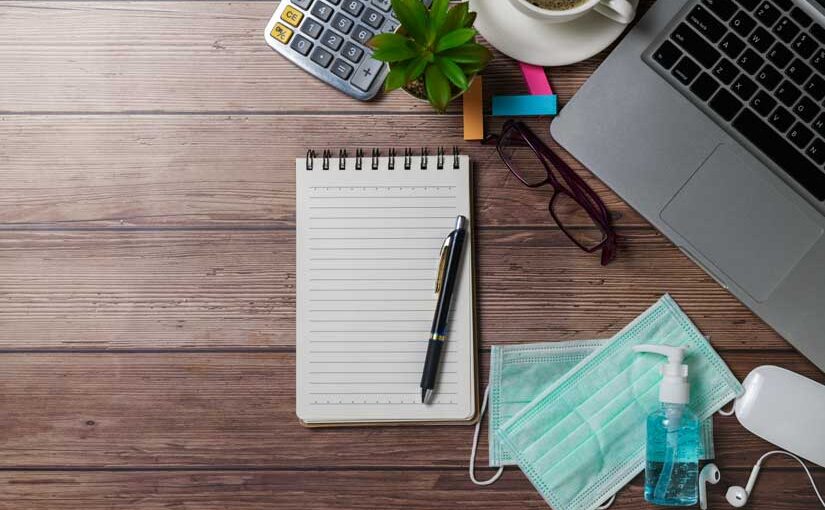The COVID-19 pandemic has kept many of us at home behind computer screens for the past year and a half.
Now that the economy has opened back up, many of us are facing the inevitability of returning to offices and classrooms.
As much as we all welcome this trend, the transition back to pre-pandemic life will not be without its challenges and even a sense of apprehension.
Here are six strategies to help you make a stress-free transition back to the workplace or school.
Re-establish a bedtime routine
Without the need to wake up and leave the house as early as you used to, you might have adjusted to later nights in front of the TV, extended screen time, and perhaps more relaxed rules. But as you prepare to return to the workplace or school, getting up earlier might become a necessity.
To ease into your “new” daytime schedule, it’s a good idea to re-establish your “old” bedtime routine. This means going to sleep at a reasonable time, reducing late-night screen time, and doing anything else you need to do to ensure you wake up the next day feeling refreshed and ready to go.
Prepare the night before
If you’ve been working mostly at home this past year and half, your mornings are likely a bit less frazzled than they were pre-pandemic. You no longer spend time commuting to work or school, and everything you need to get through the day is right there at your fingertips.
All that will change when you’re back at the office and likely further from home. To avoid hectic mornings and potentially forgetting important items, do as much preparation as you can the night before.
By making your lunch, getting your devices and books packed in your bag, and laying out your clothes in advance, the mornings will be more relaxed. You’ll be able to ease into the day with greater confidence.
If it is your first time going back, be sure to make a list of what you will need to have with you during the day. Everyone’s necessities are different, but some common items you might want to pack in advance are:
-
-
- Phone
- Wallet
- Work badge/office keys
- Transit pass, ticket, or exact-change fare
- Masks (face coverings are still required on public transit)
- Other COVID essentials (see section below)
- Water bottle
- Coffee/tea/snacks
-
Don’t forget your COVID-19 essentials
As you return to daily life surrounded by more and more people, it is important to make sure you’re prepared to keep yourself and others safe each day, not only from viruses like COVID and the flu, but also the common cold.
It can be helpful to pack a small bag of COVID-19 essentials to carry with you. This pack might contain:
-
-
- Hand sanitizer
- Masks (keep several in case you forget or lose one)
- Antibacterial wipes
- Tissues
-
Include any other items you feel can help to minimize the risk of catching a virus or cold when travelling, working, or studying. Pop your COVID essentials in your day bag the night before, so you don’t forget them in the morning while you’re getting ready to leave the house.
Check transit schedules and fares before you leave
With some transit agencies running on modified schedules, be sure to check in advance the timetables for any services you use.
Your own schedule might be different as well, so you’ll want to carefully plan your new travel routine. You might find that catching a slightly earlier or later train, bus, or light rail means less crowding and easier social distancing. Just make sure you don’t leave too late and end up rushing!
Changing commute patterns due to the pandemic has also motivated some transit agencies to update their fares to allow for more travel flexibility.
The Capitol Corridor, for example, extended its discount 10-Ride ticket from 45 days to 60, recognizing that regular riders may not need to use the train quite as often.
If you normally use a multi-ride transit pass, check to see if that pass still makes sense for your schedule.
Continue to maintain social distance
Whether it’s on the train, bus, in school, or in the office, social distancing is still helpful, even if it’s not required.
Where and when you can, put as much space as possible between you and others, and be sure to check local guidelines as recommendations may change.
If the train car you’re on is more crowded than you’d like, try moving to another one or ask the conductor for assistance.
Many agencies have implemented technologies to help their customers determine how busy their train or bus might be. The Capitol Corridor’s Occupancy Checking Tool uses recent ridership data to estimate the expected occupancy of specific trains.
Make the transition back to work in stages
Our final strategy is to see if you can work from home a few days a week instead of jumping right back into the daily 9-to-5 grind.
Not only will a hybrid home-office work situation help ease your transition, but by using your car to commute less (even if you’re only driving to a transit station), you’ll be reducing your environmental impact.
The good news here is that many companies are reevaluating their telecommuting policies to allow their employees greater flexibility with where and when they work. Now is a great time to bring up the subject to see what you can arrange.
Written by Stuart Cooke, Blog Editor at My Baggage luggage shipping specialists for students and commuters around the world.

